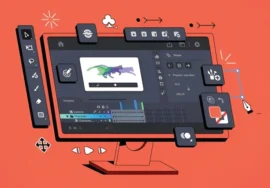
3D design is a powerful tool that has revolutionized various industries, from product design and architecture to entertainment and gaming. The process of creating a 3D model involves several distinct stages, each requiring careful consideration and technical ability. In this blog post, we will explore the key steps involved in the 3D design process, from first concept to final rendering.
Stage 1: Conceptualization
The journey of a 3D model begins with the conceptualization stage. This is where the designer’s vision takes shape, and the first ideas for the project are formed. The designer must consider the purpose of the 3D model, its intended audience, and the desired outcome. This stage involves brainstorming, sketching, and creating mood boards to set up the overall direction of the design.
Stage 2: Research and Reference Gathering
Once the concept is established, the designer moves on to the research and reference-gathering stage. This involves collecting relevant information and visual materials that will inform the design process. Designers may research existing products, historical artifacts, or natural forms to inspire their creations. Reference materials can include photographs, illustrations, sketches, or even physical objects.
Stage 3: 3D Modeling
The core of the 3D design process is the 3D modeling stage. Here, the designer uses specialized software to create the 3D model, translating the first concept into a digital representation. This stage involves building the model’s geometry, defining its shape, and adding details such as textures, materials, and lighting.
Stage 4: Texturing and Materials
Once the 3D model’s basic form is established, the designer moves on to the texturing and materials stage. This involves applying textures and materials to the model’s surfaces, giving it a realistic and appealing appearance. Textures can be created from scratch or sourced from libraries of pre-made textures. Materials are assigned to different parts of the model to simulate appearing various substances, such as wood, metal, glass, or fabric.
Stage 5: Lighting and Rendering
Lighting and rendering are crucial steps in the 3D design process, as they bring the model to life and create a sense of atmosphere. The designer sets up lighting sources, such as natural light, artificial light, or both, to illuminate the model and create shadows and reflections. The rendering process then generates a final image or animation of the model, capturing the interplay of light and shadow and showcasing the model’s details and textures.
Stage 6: Post-Production
The final stage of the 3D design process is post-production, where the designer may make further refinements to the rendered images or animations. This may involve adjusting colors, contrast, and sharpness, or adding special effects such as motion blur or depth of field. Post-production also includes creating final output formats, such as high-resolution images for print or web-based formats for online presentations.
The Evolving Landscape of 3D Design
As technology continues to advance, so too does the 3D design process. Several emerging trends are reshaping the industry, offering new possibilities and challenges:
1. Real-Time Rendering:
- Real-time rendering is revolutionizing the way designers work, allowing them to see immediate visual feedback as they make changes to their models. This eliminates the need for lengthy rendering times and enables more interactive and iterative design processes.
2. Artificial Intelligence and Machine Learning:
- AI and ML are being integrated into 3D design tools, automating tasks such as texture generation, material creation, and even model optimization. These technologies can help designers work more efficiently and creatively.
3. Virtual and Augmented Reality:
- VR and AR are transforming the way 3D models are experienced. Designers can immerse themselves in virtual environments to explore and refine their designs, while AR can be used to visualize 3D models in real-world contexts.
4. 3D Printing and Additive Manufacturing:
- 3D printing is making it possible to quickly and easily create physical prototypes and final products directly from 3D models. This is opening up new possibilities for product design, customization, and manufacturing.
Conclusion
The 3D design process is a complex and iterative journey that requires a combination of creativity, technical skills, and attention to detail. By following these key stages, designers can create stunning and realistic 3D models that serve a wide range of purposes. Whether it’s for product visualization, architectural design, or entertainment, 3D design continues to be a powerful tool that pushes the boundaries of creativity and innovation.





